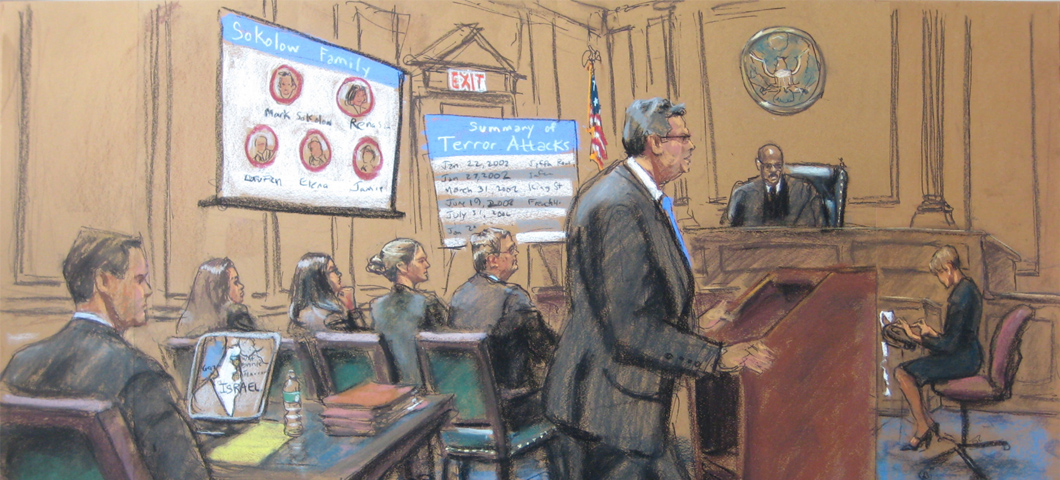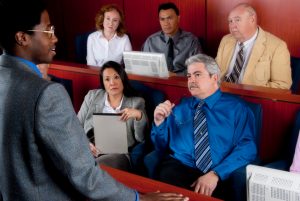The Role of Visual Aids in Successful Trial Presentations: An Overview for Lawyer
Navigating the Intricacies of Trial Presentations: Tips for Seamless Distribution and Compelling Debates
In the realm of legal proceedings, the art of trial presentation stands as a vital factor of success. The intricacies intrinsic in test discussions call for a fragile equilibrium of ability, approach, and skill.

Recognizing Test Goals
To properly navigate a test, it is crucial to have a clear understanding of the goals that need to be attained. Before tipping into the court, lawful groups must specify their objectives and desired results. These goals act as assisting concepts throughout the test, forming approaches and affecting decision-making procedures.
Recognizing test purposes entails a comprehensive analysis of the case, legal criteria, and the customer's ideal passions. Trial Presentations. It calls for a thorough exam of the realities, determining crucial problems, and expecting potential challenges. By establishing details and quantifiable goals, lawyers can customize their presentations and arguments to straighten with the preferred results
Moreover, a clear grasp of test goals enables lawful groups to prioritize evidence, witnesses, and lawful disagreements efficiently. It permits the growth of a meaningful narrative that reverberates with the discretionary, reinforcing the general case discussion.

Organizing Evidence Effectively
Having a clear understanding of trial purposes lays the foundation for arranging evidence properly in lawful proceedings. By straightening the presentation of proof with the desired end results of the trial, lawful teams can enhance their debates and improve their persuasiveness.
An additional crucial element in organizing proof effectively is developing a logical flow. Offering evidence in a sequential and meaningful fashion can help develop an engaging narrative that supports the lawful arguments being made. Furthermore, making use of visual aids such as graphs, charts, or timelines can additionally boost the organization of evidence and help in making clear complex connections or series of occasions.
Furthermore, guaranteeing that all proof offered is appropriate and permissible to the instance is important. Inadmissible or pointless proof can interfere with the strength of the argument and potentially hurt the credibility of today event. A thorough review and selection procedure should be undertaken to consist of just the most legitimately audio and impactful evidence in the trial presentation.
Crafting Persuasive Stories
Crafting compelling stories plays an essential role in providing persuasive debates during lawful proceedings. When creating Clicking Here a narrative for a test presentation, it is necessary to establish a clear story that highlights key factors and attaches them in a meaningful fashion. By weaving together proof, testimony, and legal other debates into a convincing and natural narrative, legal specialists can efficiently support for their clients and enhance the chance of a beneficial result in the court room.
Grasping Aesthetic Help
Effective use of aesthetic help is key to improving the effect and quality of trial presentations. Visual help, when made use of strategically, have the power to simplify complicated info, enhance bottom lines, and leave a long lasting impact on the discretionary. To master visual aids in trial presentations, it is vital to make certain that they are clear, succinct, and relevant to the arguments being made.
When incorporating visual aids, such as charts, timelines, photos, or charts, right into a trial presentation, it is necessary to maintain them visually appealing yet expert. The visuals must match the verbal disagreements, offering a graph of the information being discussed without overwhelming the target market with unneeded information.
Additionally, practicing with the visual aids beforehand is vital to guarantee a seamless delivery throughout the test. Familiarizing oneself with the content, transitions, and timings of each aesthetic help can assist maintain the circulation of the presentation and prevent technical glitches that may occur.
Delivering Impactful Closing Arguments
An engaging closing argument offers as the culmination of a test discussion, encapsulating the core story and persuading the judge and court towards a positive decision. Begin by detailing the major arguments that sustain your customer's position, highlighting why the proof presented throughout the test sustains your narrative.
Additionally, including emotional charm can better strengthen your closing disagreement. By linking and humanizing the situation on an individual level with the decision-makers, you can evoke empathy and understanding, affecting their assumption of the facts presented. Furthermore, stating the legal standards that should be fulfilled for a desirable ruling can reinforce the credibility of your placement. Inevitably, a well-crafted closing argument should leave a long lasting perception, engaging the court and court to regulation in your Discover More Here customer's support.
Final Thought
To conclude, understanding test discussions includes comprehending goals, organizing evidence, crafting narratives, making use of aesthetic help, and providing impactful closing disagreements. By executing these techniques efficiently, lawyers can present their instance flawlessly and make engaging disagreements in the courtroom. It is essential to navigate the intricacies of test presentations with precision and ability to accomplish success in legal proceedings.
By straightening the discussion of evidence with the desired end results of the test, legal teams can reinforce their disagreements and improve their persuasiveness (Trial Presentations). To master visual help in trial presentations, it is critical to make sure that they are clear, concise, and relevant to the debates being made
A compelling closing debate offers as the culmination of a test presentation, enveloping the core story and persuading the court and jury in the direction of a positive decision. Begin by detailing the main debates that support your customer's setting, emphasizing why the proof presented throughout the test sustains your narrative.In verdict, grasping test discussions involves comprehending objectives, arranging proof, crafting narratives, making use of visual help, and delivering impactful closing disagreements.